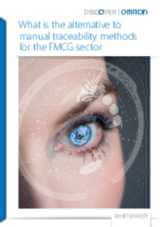Transitioning from manual record keeping to fully automated traceability
Published on 11 May, 2023 in Industry 4.0
In the fifth and final blog in this series on Traceability we will discover how machine vision technology has been taking on an increasingly important role in traceability because thanks to its effective way of maintaining complete product integrity
Vision inspection includes a wide variety of functionality such as detecting defective products in real time and performing both OCR and OCV to verify that the data on labels and packages adds up. By functioning as a complete solution for ensuring that non-conforming products don’t go out into the market, vision systems are vital for brand protection.
The hurdle that manufacturers face in implementing a machine vision system is twofold. Such systems are often expensive to implement, and the complexity of the technology can overwhelm operators. Many applications require special programming. However, these challenges are offset by the fact that a single product recall or fine for tainted product – preventable by a vision system – could cost more than the vision system itself.
The avoidance of unwanted complexity isn’t just a deterrent to using machine vision – it’s often a reason why manufacturers forego upgrading their traceability systems in any way. Because implementing a new system seems inordinately complex, many manufacturers prefer to stick with cumbersome and error-prone record keeping methods that rely on manual processes. It’s understandable that companies want traceability to be easy. However, failing to upgrade the system with automation actually leads to more work in the long run.
Manual record keeping is far more widespread in the food and beverage packaging industry than it should be, especially when one considers the huge costs associated with certain types of mistakes. Unfortunately, not all companies have the budget to invest in good traceability software. Budgetary constraints and the fact that traceability solutions need to be scalable are major barriers to automating the system.
OMRON strives to make traceability as easy as possible, just as it strives to make its machine vision technology intuitive enough for the average operator to use. Its MicroHAWK barcode readers keep things simple by working right out of the box – in fact, the browserbased WebLink interface allows manufacturers to start using the readers without needing to install any software whatsoever. OMRON also has extensive knowledge of how traceability works in a variety of industries, and its focus on providing comprehensive solutions with complete line integration lets companies rest assured that the upgraded system will “just work.”
Although often perceived to be challenging and somewhat expensive at the outset, a robust traceability system is the single most important means of complying with industry regulations and reducing the incidence and cost of recalls. OMRON’s traceability solutions address various pain points that manufacturers face in the food and beverage packaging industry so that real-time, automated traceability is within the reach of any company that needs to comply.
Contact us for more information
